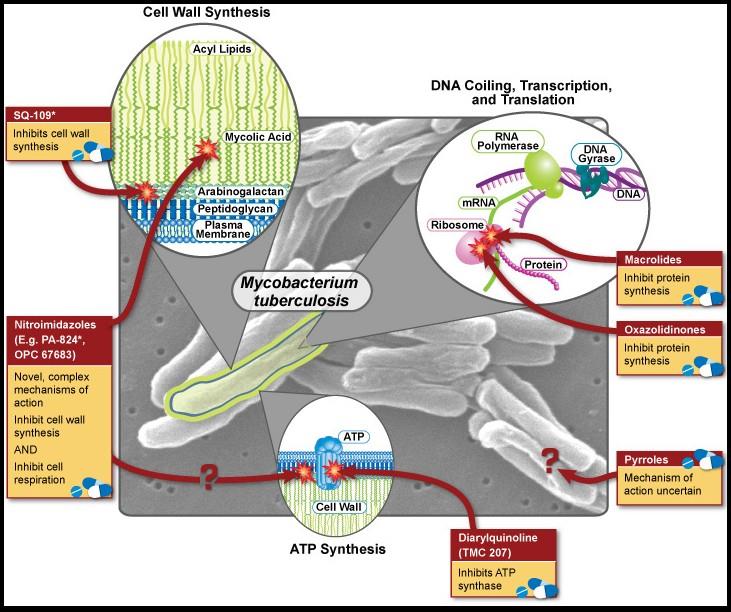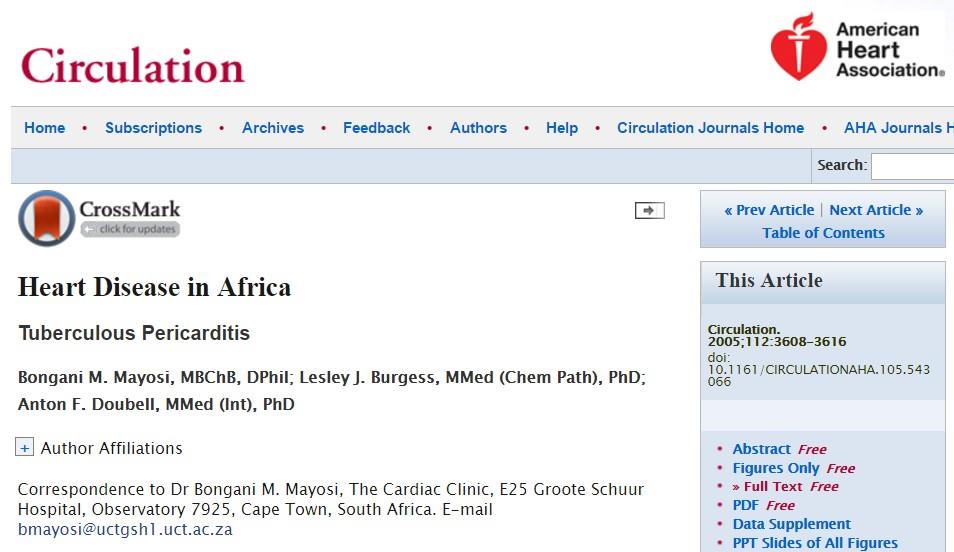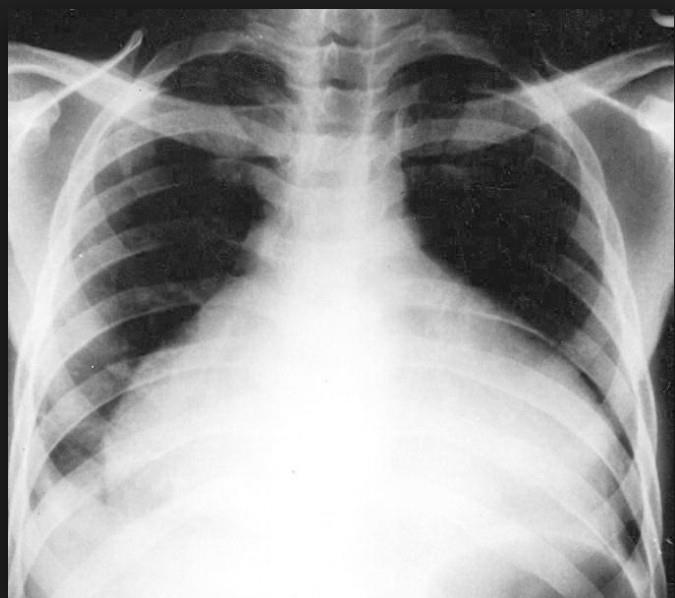TB and Pericarditis


![]()
Editor’s Note:
I got this question posed to me via FB from my brother in Central America:
Question for you.
Hey Frank, have you heard of swelling around the heart as a result of TB infection? I have a friend in France who has had health problems for years- Docs now think it’s TB that resulted in pericarditis. He’s on mega antibiotics. Have you seen this before?
![]()
Courtesy of Circulation- Click on image to view source article…
Tuberculous Pericarditis
Although there has been a significant decline in tuberculosis (TB) in wealthy industrialized countries over the past 100 years, the estimated number of new cases worldwide has increased steadily, from 8.0 million in 1997 to 8.3 million in 2000, and is expected to reach 10.2 million in 2005.1 Africa, Asia, and Latin America, with 86% of the world’s population, are home to 95% of all cases of active TB and 98% of the nearly 2 million deaths resulting from TB each year.1
Tuberculous pericarditis, caused by Mycobacterium tuberculosis, is found in approximately 1% of all autopsied cases of TB and in 1% to 2% of instances of pulmonary TB.2 It is the most common cause of pericarditis in Africa and other countries in which TB remains a major public health problem.3 In one series from the Western Cape Province of South Africa, tuberculous pericarditis accounted for 69.5% (162 of 233) of cases referred for diagnostic pericardiocentesis.4 By contrast, tuberculous pericarditis accounts for only 4% of cases in developed countries.5 The incidence of tuberculous pericarditis in sub-Saharan Africa is increasing as a result of the human immunodeficiency virus (HIV) epidemic, and this trend is likely to appear in other parts of the world where the spread of HIV is leading to a resurgence of TB.6,7 In the Western Cape, one half of the patients presenting with large tuberculous pericardial effusions are infected with HIV.4
Recent reviews on the diagnosis and management of pericardial disease have paid scant attention to tuberculous pericarditis, which is arguably the leading cause of pericarditis in the world.8,9 In the present article, we focus on advances in the understanding of the pathogenesis, diagnosis, and management of tuberculous pericarditis, with particular reference to people living in Africa and other poor regions of the world.
We performed a broad sensitive search of MEDLINE, with the terms “tuberculous pericarditis,” “tuberculous pericardial effusion,” and “tuberculous pericardial constriction,” which uses the method of Haynes et al10 for identifying high-quality clinical studies. We retrieved human studies on etiology, diagnosis, therapy, and prognosis of tuberculous pericarditis that were published in English from January 1, 1966, to May 7, 2005. We also searched the Cochrane Database of Systematic Reviews for studies on tuberculous pericarditis (The Cochrane Library Issue 1, 2005). Overall, this search strategy yielded 185 references, 160 of which were original studies with a total of 3571 cases of tuberculous pericarditis. Table 1shows the types of studies, diagnostic criteria used, and numbers of cases in each category. Articles with new or important insights and an explicit method for the diagnosis of tuberculous pericarditis are cited in this review.
![]()
Click image for source article
RX
First line Drugs
All first-line anti-tuberculous drug names have a standard three-letter and a single-letter abbreviation:
- ethambutol is EMB or E,
- isoniazid is INH or H,
- pyrazinamide is PZA or Z,
- rifampicin is RMP or R,
- streptomycin is SM or S.
The US uses abbreviations and names that are not internationally recognised: rifampicin is called rifampin and abbreviated RIF; streptomycin is abbreviated STM. In the US only, streptomycin is no longer considered a first line drug by ATS/IDSA/CDC because of high rates of resistance.[3] The WHO have made no such recommendation.
Drug regimens are similarly abbreviated in a standardised manner. The drugs are listed using their single letter abbreviations (in the order given above, which is roughly the order of introduction into clinical practice). A prefix denotes the number of months the treatment should be given for; a subscript denotes intermittent dosing (so 3means three times a week) and no subscript means daily dosing. Most regimens have an initial high-intensity phase, followed by a continuation phase (also called a consolidation phase or eradication phase): the high-intensity phase is given first, then the continuation phase, the two phases divided by a slash.
So,2HREZ/4HR3
means isoniazid, rifampicin, ethambutol, pyrazinamide daily for two months, followed by four months of isoniazid and rifampicin given three times a week.
These standard abbreviations are used in the rest of this article.
Second line
The second line drugs (WHO groups 2, 3 and 4) are only used to treat disease that is resistant to first line therapy (i.e., for extensively drug-resistant tuberculosis (XDR-TB) or multidrug-resistant tuberculosis (MDR-TB)).[4] A drug may be classed as second-line instead of first-line for one of three possible reasons: it may be less effective than the first-line drugs (e.g., p-aminosalicylic acid); or, it may have toxic side-effects (e.g., cycloserine); or it may be effective, but unavailable in many developing countries (e.g., fluoroquinolones):
- aminoglycosides (WHO group 2): e.g., amikacin (AMK), kanamycin (KM);
- polypeptides (WHO group 2): e.g., capreomycin, viomycin, enviomycin;
- fluoroquinolones (WHO group 3): e.g., ciprofloxacin (CIP), levofloxacin, moxifloxacin (MXF);
- thioamides (WHO group 4): e.g. ethionamide, prothionamide
- cycloserine (WHO group 4)
- terizidone (WHO group 5)
Third line
Third-line drugs (WHO group 5) include drugs that may be useful, but have doubtful or unproven efficacy:
- rifabutin
- macrolides: e.g., clarithromycin (CLR);
- linezolid (LZD);
- thioacetazone (T);
- thioridazine;
- arginine;
- vitamin D;
- bedaquiline.
These drugs are listed here either because they are not very effective (e.g., clarithromycin) or because their efficacy has not been proven (e.g., linezolid, R207910). Rifabutin is effective, but is not included on the WHO list because for most developing countries, it is impractically expensive.
![]()



